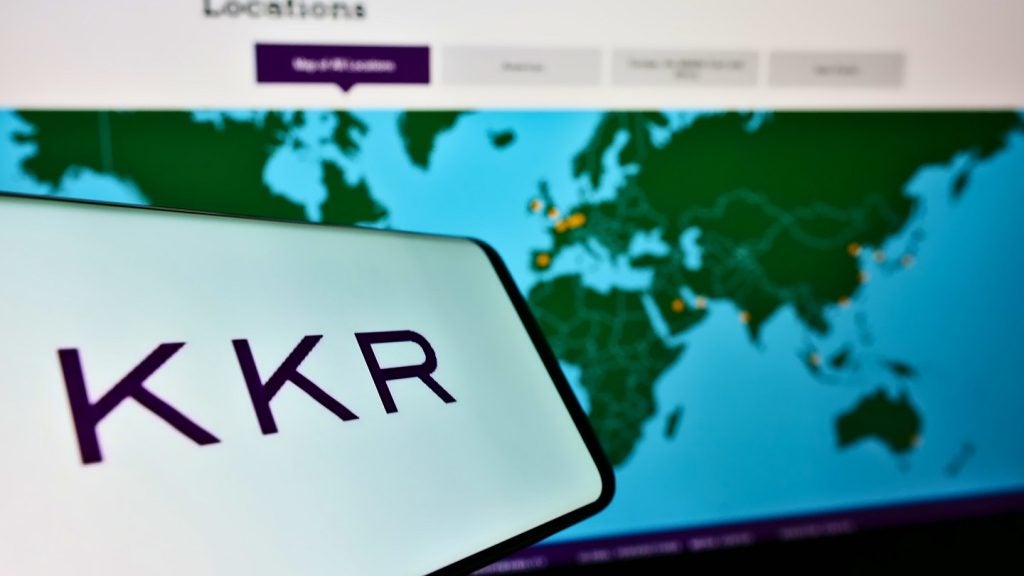
The Philippines has one of the fastest-growing and most promising life insurance segments in Southeast Asia, and the low penetration of life insurance in the Philippines, at 0.96% of the country’s GDP in 2011, provides opportunities for life insurance companies, according to a new report, Life Insurance in the Philippines, Key Trends and Opportunities to 2016, which is available at the Insurance Intelligence Center (IIC).
The Philippine life insurance segment is expected to expand over 2012-2016, due to the country’s growing economy, increasing annual disposable income level and the expanding middle-class population.
The key business drivers for the Philippine life insurance segment during 2007-2011 were:
– Strong economic growth
– Development of the bancassurance channel
– Increasing popularity of unit-linked insurance and group insurance products
How well do you really know your competitors?
Access the most comprehensive Company Profiles on the market, powered by GlobalData. Save hours of research. Gain competitive edge.

Thank you!
Your download email will arrive shortly
Not ready to buy yet? Download a free sample
We are confident about the unique quality of our Company Profiles. However, we want you to make the most beneficial decision for your business, so we offer a free sample that you can download by submitting the below form
By GlobalData– Rising consumer awareness of the benefits of life insurance products
– Increasing penetration of microinsurance
Economic engine
In the first place, the Philippines maintained steady economic growth throughout 2007-2011, and this is expected to continue over the forecast period.
Specifically, the country’s GDP at current prices grew at a CAGR of 9.0% during the review period although it declined to 4.0% in 2009 due to the global financial crisis.
However, the country’s economy started to recover in 2010, and its GDP recording an impressive annual growth of 12.2% and 8.1% in 2010 and 2011 respectively.
According to an International Monetary Fund (IMF) forecast, the country is expected to record a CAGR of 8.9% over the forecast period.
As a result of the country’s strong economic growth, the written premium value of life insurance is also expected to rise significantly over the forecast period.
The written premium value will also be supported by increasing insurance penetration and the rising awareness of the need for, and benefits of, life insurance among the Philippine population.
The Philippine life insurance segment’s gross written premiums are expected to increase from PHP93.7 billion (US$2.2 billion) in 2011 to PHP128.9 billion (US$3.0 billion) in 2016, after registering a CAGR of 6.6% over the forecast period.
Although Philippine life insurers have traditionally relied on their large network of insurance agencies to distribute life products, the entry of multinational life insurers during the review period has increased the importance of bancassurance as a distribution channel in the country.
Consequently, bancassurance was the second-largest distribution channel for life insurance products in 2011, accounting for 15.7% of the life insurance new business written premium. The new business written premium from bancassurance is expected to record a CAGR of 11.8% over the forecast period to reach PHP11.2 billion (US$257.8 million) in 2016.
The Philippine life insurance segment has developed from only offering risk protection products to also providing investment-related products. Notably, unit-linked insurance products, which were introduced by foreign insurers in 1998, were a key growth driver for life insurance in the Philippines during the review period.
These products provide customers with a combination of life insurance cover and a means of investment that offers higher returns than normal bank deposit rates.
According to the Philippines Life Insurance Association (PLIA), the unit-linked premium income of life insurance companies accounted for 41.5% of the total life insurance written premium in 2011. The continued interest among buyers for unit-linked insurance products will also drive the growth of life insurance in the Philippines over the forecast period.
Moreover, the PLIA has also disclosed that sales of group insurance policies are increasing, with a rising number of Philippine businesses recognizing the value of providing cover to their employees.
Financial literacy
The increasing awareness and broad financial literacy among consumers has created demand for life insurance products in the Philippines. Life insurance premiums represented 0.96% of the country’s GDP in 2011, far below other Asian countries such as India, Malaysia and China with 3.4%, 2.7% and 2.0% respectively.
The penetration of life insurance products is expected to increase significantly over the forecast period with increased participation by consumers and the development of innovative new products, such as microinsurance targeted towards the country’s less affluent population.
PLIA also took several initiatives to spread awareness of life insurance across the country during the review period.
There has been an increase in the number of microinsurance products in the Philippines, with some coming from established insurance companies.
The country is considered one of the most developed microinsurance markets in Asia, and products are primarily targeted at the less affluent population to provide them protection against unforeseen events.
The Philippine insurance regulatory authority took several initiatives to promote these products during the review period, and since 2008, the Insurance Commission and the Bangko Sentral ng Pilipinas (BSP) have collaborated with number of organizations to create a regulatory environment that is conducive to microinsurance in the Philippines.
The Philippine Insurers and Reinsurers Association (PIRA) has also promoted the development of microinsurance among its 84 member companies, and the BSP recently authorized rural banks with a network of over 2,700 offices nationwide to operate as distribution points for microinsurance products across the Philippines.
Initiatives such as these are expected to drive the demand for microinsurance products over the forecast period, and it is expected that the number of microinsurance policyholders will increase from 3.0 million in 2010 to 7.0 million in 2015
A favourable regulatory environment is also a positive factor shaping the country’s life insurance market.
The insurance industry in the Philippines was significantly liberalized by legislation in 1994. Foreign direct investment (FDI) regulations allow up to 100% ownership by foreign companies in the insurance industry.
As of 2010, the Philippines had signed bilateral investment agreements with more than 40 countries, including Australia, Belgium, Canada, Chile, China, France, Germany, India, Italy, Japan, South Korea, Russia, Spain, Sweden, Switzerland, and the UK.
This is expected to encourage several new companies to enter the country’s insurance industry. However, the rising minimum paid-up capital requirement will be a concern for companies entering the industry.
Key consumer drivers include increase in life expectancy and a large working age population.
The Philippines’ rising life expectancy was a key consumer growth driver for the Philippine life insurance segment during 2007-2011.
Life expectancy is used to calculate the premium that should be paid by policyholders when purchasing a life insurance policy. In the Philippines, life expectancy increased, and the number of people aged above 64 increased from 3.8 million in 2007 to 4.3 million in 2011.
Life expectancy is projected to increase further as the number of people aged above 64 is expected to grow over the forecast period. This is expected to make a significant contribution to the growth of the life insurance segment.
The Philippine population in the 15-24 years age group increased from 18.7 million in 2007 to 19.6 million in 2011. With growing awareness of the benefits of insurance among the country’s young employed population, this age group’s investment in life insurance products will stimulate the growth of the segment over the forecast period.
Market outlook
The Philippines has one of the promising life insurance segments in Southeast Asia, and the low penetration of life insurance in the country, at 0.96% of GDP in 2011, provides opportunities for life insurance companies.
The global economic crisis severely affected the Philippine life insurance segment. The country’s declining interest rate, weak stock market and underperforming real estate industry reduced the profitability of life insurance in the Philippines.
As a result, the written premiums of life insurance decreased at a CAGR of -0.3% during the review period to reach PHP93.7bn in 2011.
Life insurance penetration also fell from 1.38% in 2007 to 0.96% in 2011. However, the number of life insurance policies sold increased by 6.8%, and the population covered by life insurance rose to 3.8 million in 2011.
Regulatory developments
There were some regulatory changes and amendments to the Philippine life insurance segment during the review period.
The Insurance Commission, which is a part of the Philippines’ Department of Finance, is responsible for supervising and regulating the Philippine insurance industry.
To maintain competition and improve the government’s management of the insurance industry, regulations were introduced that increased the minimum capital requirement for operating as a life insurer in the country to PHP175 million (US$4.0 million).
Regulations also state that no company can engage in the life insurance business without obtaining a license from the Insurance Commission to issue education, pension and life insurance plans. In addition, the central bank of the Philippines, the Bangko Sentral ng Pilipinas (BSP), recently approved the selling of microinsurance products through rural banks in order to improve the access of insurance to the country’s large rural population.
An important development has been that the BSP has authorised rural banks with network of over 2,700 offices nationwide to operate as distribution points for microinsurance products.
Furthermore, the implementation of a new law reduced taxes on life insurance premiums from 5% to 2% during the review period.
There have also been changes to the documentary stamp taxes that affect the life insurance segment. The newly imposed documentary stamp tax reduced the previous rate of premium taxes, which will enable the cost of life insurance for policyholders to reduce.
These favourable tax changes will support the sale of life insurance in the Philippines over the forecast period.
The life insurance segment generated higher premium incomes than non-life segment in the Philippines during 2007- 2011.
The segment is highly concentrated, with the ten leading life insurance companies accounting for 86.0% of the total life insurance written premiums 2011.
Sun Life Financial Philippines was the largest life insurance company in 2011, and accounting for a market share of 16.1%.
The Philippine American Life and General Insurance Company, and Philippine Axa Life Insurance Corporation were the second and third-largest life insurance companies, with respective market shares of 15.6% and 11.6%.
The other leading life insurance companies in the Philippines include Pru Life UK, Insular Life Philippines, BPI-Philam Life Assurance Corporation, Manulife Philippines, Sun Life Grepa Financial, United Coconut Planters Life Assurance Corporation and Generali Philippines.







